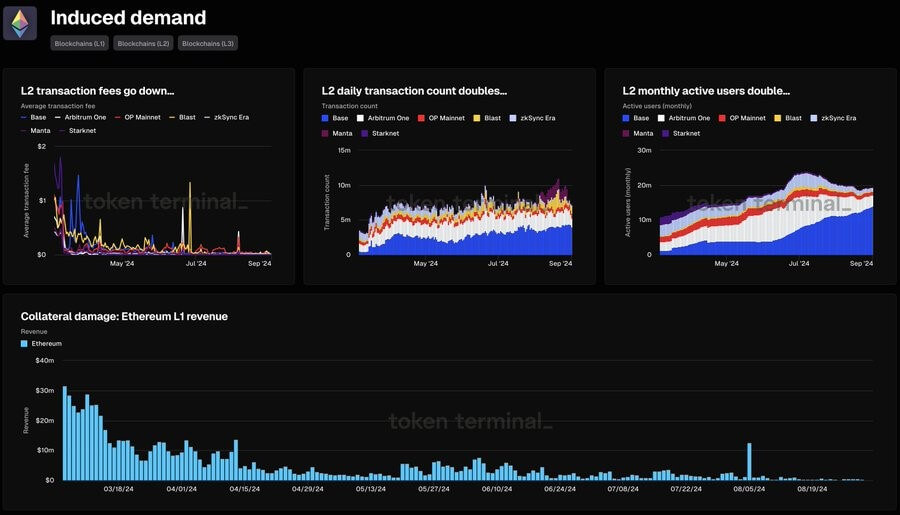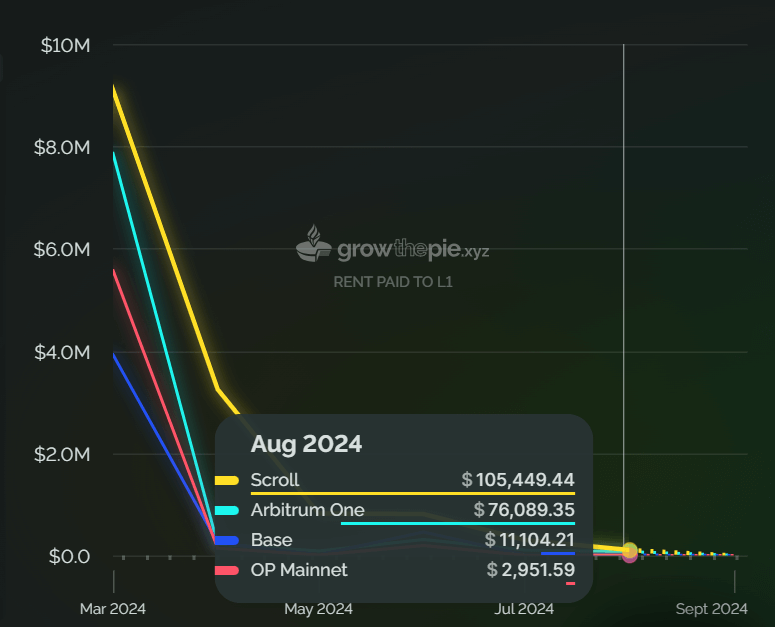Ethereum’s Layer-1 network has witnessed a drastic drop in revenue, falling 99% since March 2024.
Facts from Token Terminal shows that network revenues peaked at more than $35 million on March 5. By September 2, however, daily revenues had fallen to an annual low of about $200,000.

Market observers attribute this decline to the growth of Layer-2 (L2) networks and March’s Dencun upgrade, which lowered fees for L2 transactions and reshaped Ethereum’s revenue structure. Token Terminal stated:
“Key metrics showing how lower transaction fees on L2s have increased usage but also reduced revenue on the L1.”
Post-upgrade transaction activity has shifted from Ethereum’s mainnet to L2 networks, leading to more daily transactions and active users on these platforms.
However, this migration has had a significant impact on Ethereum’s fee revenue. For example, Coinbase’s L2 network, Base, generated $2.5 million in revenue in August but paid only $11,000 to establish itself on the mainnet, underscoring the shift in value from Ethereum’s base layer.


Crypto analyst Kun warned that if this trend continues, L2 networks could dominate and possibly exit Ethereum’s mainnet, especially for consumer applications. He emphasized the need for Ethereum to develop valuable use cases on its mainnet or risk a serious valuation problem.
He added:
“ETH L1 needs valuable use cases on the mainnet that can’t be besieged, or you have to hope that the L2 usage is so high that you essentially need 100,000 times the usage on L2 to get the same value as on the mainnet, with a small fraction that then creates a valley of valuation problems.”
‘Death Spiral’
Bitcoin investor Fred Krueger has echoed these concerns, suggesting that Ethereum could face a “death spiral” if the low revenue situation continues.
He pointed out that Ethereum’s current fee revenue of $200,000 per day equates to $73 million per year, far from sufficient to maintain its $300 billion market cap.
Krueger argues that a more realistic valuation could be closer to $3 billion, underscoring the discrepancy between Ethereum’s fee revenue model and its market valuation. He said:
“[Ethereum is] not equal to a company that makes $73 million a year in profits, or even a company that generates $73 million a year in revenues. That’s $73 million not even enough to buy back all the inflation that naturally comes to ETH validators.”

